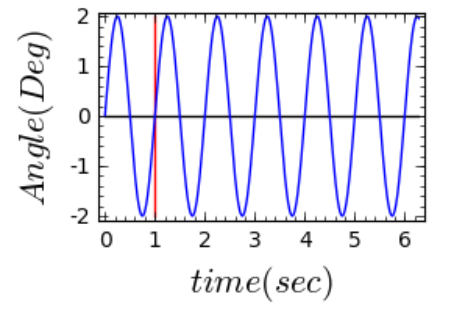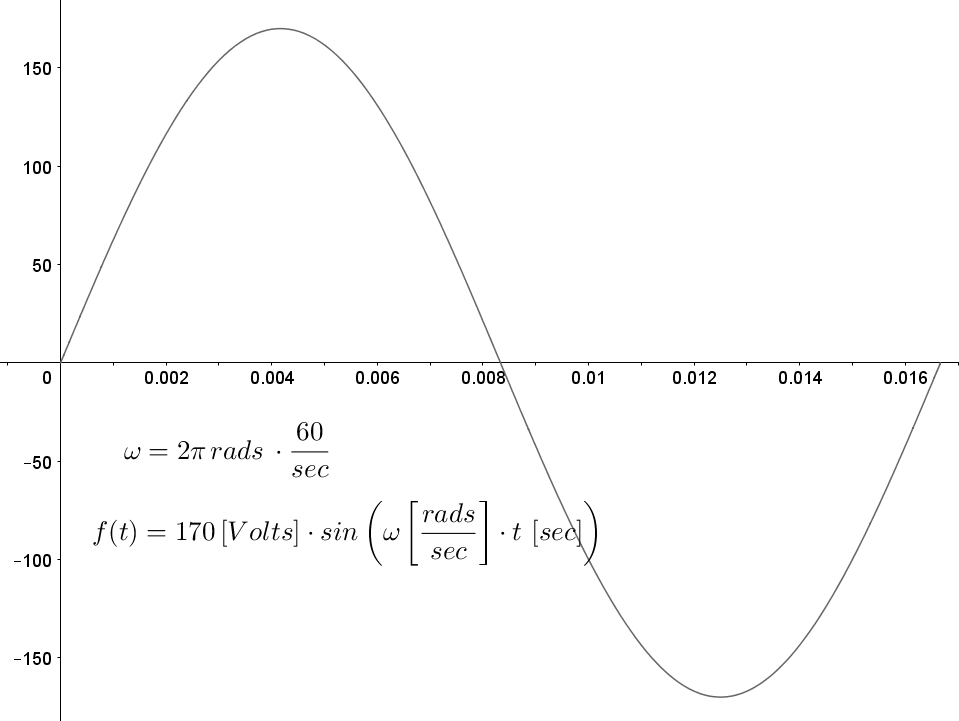Periodic Time Functions
When oscillations are charted versus time, their is a strong inference to model the behavior with a sine function. As an example, suppose we have a pendulum that is set in motion. We can easily count the number of cycles versus time and we graph the pendulum arm angle versus time, thereby getting a sine wave with angle, $\theta$, on the $y$-axis and time on the $x$-axis. It might look like figure 1. But what equation would model this graph?

We can pretty much see that it is a sine wave. So we guess a model like $f(t)=A\cdot sin(B\cdot t+C)+D$. The amplitude must be $2$. Likewise, there is no phase shift, nor even a vertical shift, so $C$ and $D$ must be zero. It looks like the period is $1$ second, and according to the definition of period, $B=2\pi/T$. That makes the equation $Angle(t)=sin\left(\frac{2\pi}{T}\cdot t\right).$
Scientists make this measurement so often that we have given a special name to $\left(\frac{2\pi}{T}\right)$. It is called $\color{red}{\omega}$ or sometimes $\omega_{0}$. If we look it up, it is called the natural frequency or fundamental frequency. The equation is written as $Angle(t)=sin(\omega t)$ and everyone knows what is meant.
